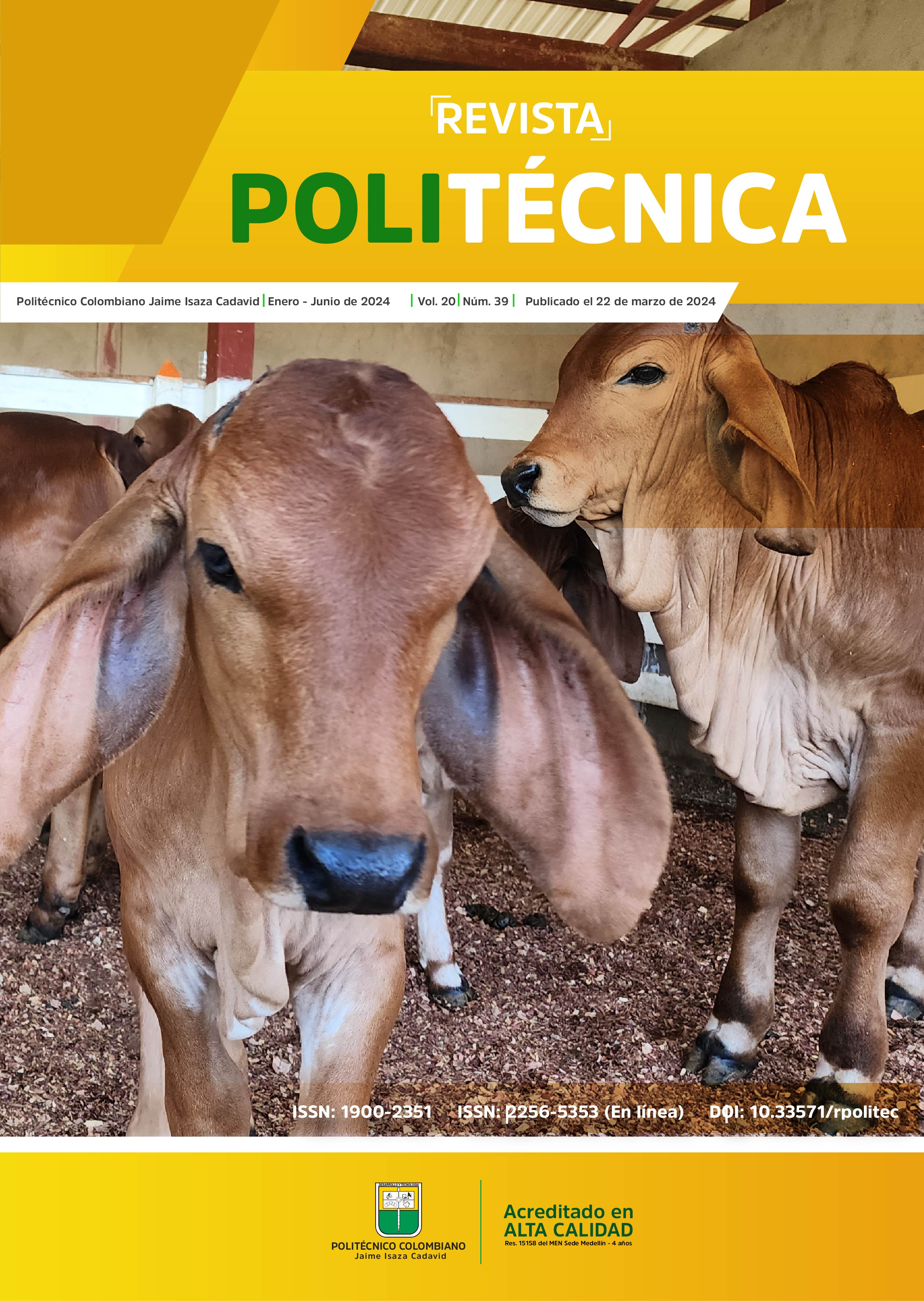Influence of Fiber Distribution on the Flexural Strength of Self-Compacting Concrete.
DOI:
https://doi.org/10.33571/rpolitec.v20n39a4Keywords:
Concrete, Flexion, Fibers, DistributionAbstract
Concrete has long been one of the most important materials in civil works projects. Its implementation includes the majority of infrastructure of which the human being makes use for the development of their activities in an appropriate way, therefore, the improvement of this, through the addition of new types of materials that allow a better efficiency of the concrete to the multiple efforts to which it is subjected establish the guidelines to study how the distribution of fibers of different material influences the resistance to bending of self-compacting concrete. Through the creation of concrete specimen type beams, the resistance is evaluated by bending tests, then cross and longitudinal sections are made where the distribution of fibers can be observed in order to record their positioning in a representative area and thus relate to the data obtained on their resistance. It is obtained that specimens with synthetic fibers had a minimal improvement in flexural strength, but with a high resistance to rupture and cracking, since both parts of the beams remained together even after failure, representing difficulty to make the cuts already mentioned. Steel fibers represent a significant increase in bending strength and, in the same way as synthetic fibers, generate an increase in resistance to rupture and cracking. The fiber analysis distribution, we find that fibers segregate in the upper part of the beams so showing greater resistance to bending.
Article Metrics
Abstract: 368 PDF (Español (España)): 293 HTML (Español (España)): 13PlumX metrics
References
Quiliche Neira, J. S. (2018). Influencia del polvo de mármol y superplastificante sobre la
compresión, porosidad, capacidad del paso y relleno de un concreto autocompactante. [Tesis para optar el título profesional de: Ingeniero Civil]. Repositorio Universidad Privada del Norte. Trujillo, Perú.
Huamani Huarancca, I. (2018). Concreto autocompactante: Diseño, beneficios y consideraciones
básicas para su uso en la ciudad de Ayacucho. Ayacucho, Perú. [Tesis para optar el título profesional de: Ingeniero Civil] Repositorios nacionales Universidad Nacional de San Cristóbal de Huamanga.
García Estrada, J. M. (2020). Guía teórica básica del concreto, como material de construcción Guatemala, Guatemala [Doctoral dissertation, Universidad de San Carlos de Guatemala]. Repositorio del sistema bibliotecario de Universidad de San Carlos Guatemala.
Mehta, P. K., & Monteiro, P. (1998). Concreto: estructura, propiedades y materiales. Instituto Mexicano del Cemento y del Concreto (pp. 33-56). IMCYC
Muñoz Cebrián, F. (2011). Comportamiento mecánico del hormigón reforzado con fibra de polipropileno multifilamento: Influencia del porcentaje de fibra adicionado [Doctoral dissertation, Universitat Politècnica de València].
Suárez-Guerra, F. (2020). Evaluación de las propiedades de fractura en cementos y yesos adicionados con diversos tipos de fibras plásticas [Trabajo de fin de grado]. Repositorio de Trabajos Académicos de la Universidad de Jaén
Chilón Quispe, S. N. (2018). Influencia de la fibra sintética (SIKA® fiber force PP-48) en el comportamiento mecánico de un concreto autocompactante con f´ c= 280 kg/cm2 [Tesis para optar el título de: Ingeniero Civil]. Repositorio Universidad Nacional de Cajamarca.
Ministerio de comercio, industria y turismo. (2 de Febrero de 2015). Reglamento técnico aplicable
a alambre de acero liso, grafilado y mallas electrosoldadas, para refuerzo de concreto que
se fabriquen, importen o comercialicen en Colombia.
DEEB, R.; KULASEGARAM, S.; KARIHALOO, B. L. 3D modelling of the flow of self-compacting concrete with or without steel fibers. Part I: slump flow test. Computational Particle Mechanics, 2014, vol. 1, p. 373-389. https://doi.org/10.1007/s40571-014-0002-y.
DEEB, Rola; KULASEGARAM, Sivakumar; KARIHALOO, Bhushan Lai. 3D modeling of the flow of self-compacting concrete with or without steel fibres. Part II: L-box test and the assessment of fibre reorientation during the flow. Computational Particle Mechanics, 2014, vol. 1, p. 391-408. https://doi.org/10.1007/s40571-014-0003-x
Herencia Chuquihuanga, Q., Pano Loayza, G. R., & Lara Guillén, W. N. (2018). Análisis experimental de concreto autocompactante con fibras sintéticas. Repositorio Institucional – Pontificia Universidad Católica del Perú
García, S. L. Q., & Salcedo, L. O. G. (2006). Uso de fibra de estopa de coco para mejorar las propiedades mecánicas del concreto. Ingeniería y Desarrollo, (20), 134-150.
Pelisser, F., Neto, A. B. D. S. S., La Rovere, H. L., & de Andrade Pinto, R. C. (2010). Effect of the addition of synthetic fibers to concrete thin slabs on plastic shrinkage cracking. Construction and building materials, 24(11), 2171-2176. https://doi.org/10.1016/j.conbuildmat.2010.04.041.
Raby Sandoval, A. M. (2016). Caracterización de hormigón autocompactante reforzado con fibras sintéticas para uso estructural. [Tesis para optar el título de: Ingeniero Civil]. Repositorio Académico de la Universidad de Chile
Instituto Colombiano de Normas Técnicas, Colombia–NTC, N. T. (2018). NTC 77: Método de ensayo para el análisis por tamizado de los agregados finos y gruesos.
Instituto Colombiano de Normas Técnicas, (1995). NTC 92. Determinación de la masa unitaria y los vacíos entre partículas.. Bogotá, Colombia.
Instituto Colombiano de Normas Técnicas, Colombiana, N. T. (2000). NTC 174: Especificaciones de los agregados para concreto.
Instituto Colombiano de Normas Técnicas y Certificación (ICONTEC). DE, E. Y. C. D. E., & OBRA, C. E. (2000). NTC 550. Concretos, Elaboración y Curado de Especímenes de Concreto en Obra.
Instituto Colombiano de Normas Técnicas, Colombiana, N. T. (1998). NTC 454. Ingeniería Civil y Arquitectura. Concretos. Concreto Fresco. Toma de Muestras.
Instituto Colombiano de Normas Técnicas, Colombiana, N. T. (2010). NTC 673. Concretos. Ensayo de resistencia a la compresión de especímenes cilíndricos de concreto.
American Society for Testing and Materials. (2001). ASTM C293, Standard Test Method for Flexural Strength of Concrete (Using Simple Beam with Center-Point Loading). Philadelphia: ASTM.
Published
How to Cite
Issue
Section
License
Copyright (c) 2024 Diego Valencia-Enríquez, Oscar Deivy Figueroa-Moran, Daniel Esteban Mesa-Erazo, Juan Sebastian Pareja-Peña

This work is licensed under a Creative Commons Attribution-NonCommercial-ShareAlike 4.0 International License.


























